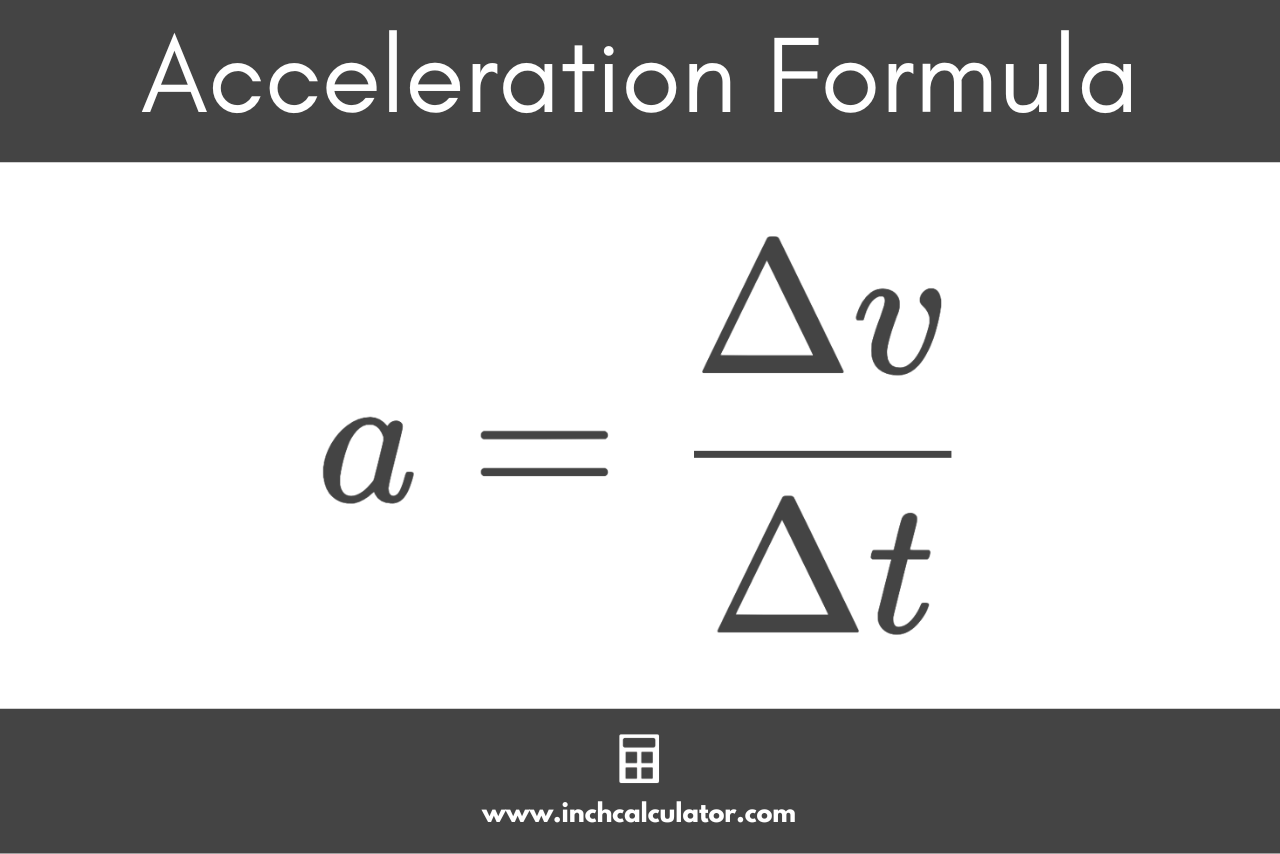Acceleration Calculator
Use our acceleration calculator to find acceleration using velocity and time.
Acceleration:
Acceleration Formula
Final Velocity Formula
Initial Velocity Formula
Time Formula
On this page:
How to Calculate Acceleration
Acceleration is a fundamental concept in physics and represents the rate of change of velocity with respect to time. Whether it is a car speeding up, a ball being thrown, or a plane taking off, acceleration is involved.
Essentially, acceleration tells us how much the velocity of an object changes over a specific period of time. You can calculate average acceleration if you know the initial and final velocity of an object and the time it takes to reach the final velocity.
Acceleration Formula
The acceleration formula is:
Thus, the acceleration a of an object is equal to the difference of the final velocity vt and the initial velocity v0, divided by the time duration t.
The difference of the final velocity and initial velocity is sometimes expressed as the change in velocity Δv and the time duration is sometimes expressed as Δt.
So, the formula to calculate acceleration can also be expressed as:
The acceleration a of an object is equal to the change in velocity Δv divided by the change in time Δt.

You might also be interested in our magnitude of acceleration calculator.
For example, let’s calculate the acceleration of a car that accelerates from an initial velocity of 20 m/s to a final velocity of 50 m/s over 5 seconds.
Types of Acceleration
There are a few different types of acceleration:
- Uniform Acceleration: This is when the velocity of an object changes by the same amount over equal intervals of time. A car going from 0 to 60 mph in 10 seconds and then from 60 to 120 mph in the next 10 seconds is experiencing uniform acceleration.
- Non-uniform Acceleration: In this case, the rate of change of velocity is not constant over time. If that same car went from 0 to 50 mph in 10 seconds and then from 50 to 90 mph in the next 10 seconds, it would be experiencing non-uniform acceleration.
- Tangential or Linear Acceleration: This refers to the acceleration of an object moving in a straight line.
- Radial or Centripetal Acceleration: This is experienced by an object moving in a circular path. The acceleration vector points toward the center of the circular path.
- Angular Acceleration: This focuses on the rate of change of angular velocity and is concerned with how an object speeds up or slows down its rotation. Unlike radial acceleration, angular acceleration is directly related to the torques applied to the system and not necessarily to the geometry of the motion (like the radius of the circle).
Common Acceleration Measurement Units
Acceleration is typically measured in meters per second squared (m/s²), feet per second squared (ft/s²), or g-force (g).
In the realm of automotive performance, you might also hear about “zero to sixty” times as a way to describe how quickly a vehicle can accelerate, but it is not a formal unit of acceleration.
What is G-Force
G-force, or gravitational force equivalent, is the force of gravity on an object. The acceleration caused by the gravitational force of the Earth is approximately 9.81 m/s² (denoted by g).
This is often used as a baseline for comparing other accelerations. For instance, astronauts during a space shuttle launch might experience accelerations up to 3g, meaning three times the acceleration caused by Earth’s gravity.
Frequently Asked Questions
Is it possible for acceleration to be negative?
Yes! Negative acceleration, often called deceleration, means the object is slowing down.
How is acceleration different from velocity?
While velocity indicates the speed and direction of an object, acceleration indicates the rate at which the velocity itself is changing.
Can an object be moving if its acceleration is zero?
Absolutely. If an object is moving at a constant velocity, its acceleration is zero. It means the object is neither speeding up nor slowing down.


